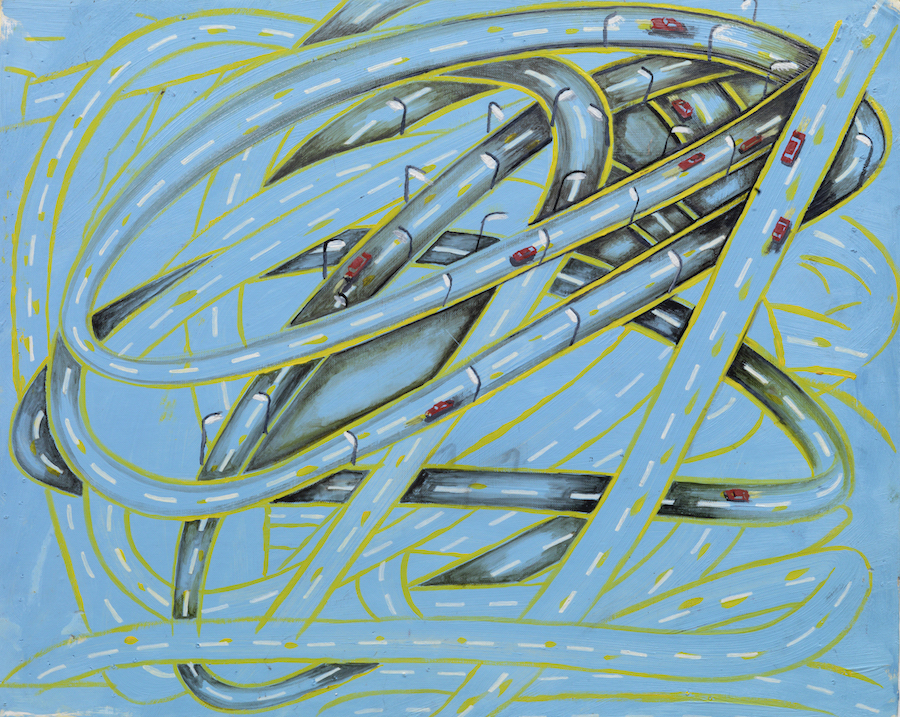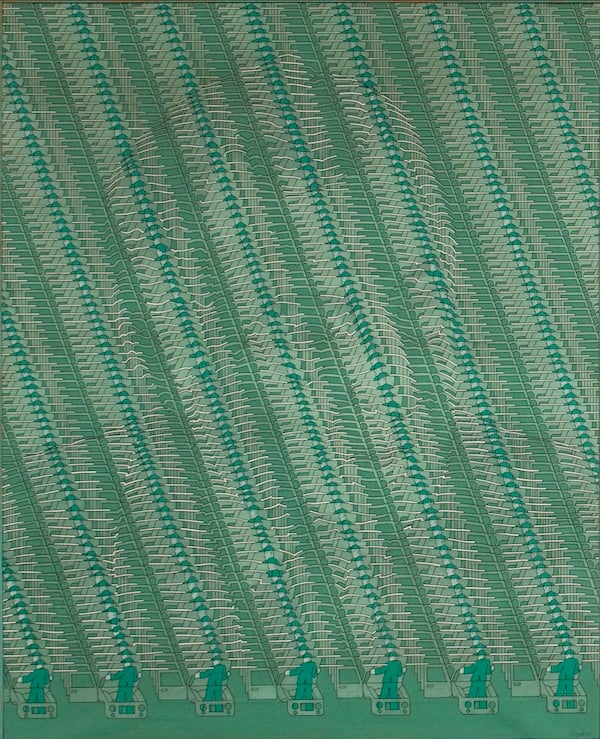On View
Thomas Bayrle’s Prophetic Pop Art Gets Its Due at Miami’s ICA
It's the artist's first US museum show.

It's the artist's first US museum show.

Henri Neuendorf

It was an evening of firsts and lasts at Miami’s Institute of Contemporary Art, with German artist Thomas Bayrle presenting his first major survey exhibition in an American museum, which was simultaneously the institution’s final exhibition at its current location before moving to Miami’s Design District.
One Day on Success Street shows excerpts from the multimedia art pioneer’s influential oeuvre spanning from the 1960s to the present day. The show includes 75 paintings, sculptures, videos, collages, and installations. Its eye-catching centerpiece, a giant specially-commissioned site-specific steel rendition of the Madonna and Child, Wire Madonna, graces the atrium of the museum—the artist’s largest piece to date.
“Thomas Bayrle is a significant artist who has not had what we consider his recognition in the United States. This is his first US museum show, which is kind of extraordinary,” ICA director Ellen Salpeter told artnet News at the press preview.
“This show has a resonance for Miami because it really deals with cities and urbanism and modes of transit and transport and structures and superstructure,” Salpeter continued. “And Miami is a city that is booming and growing and dealing with a lot of the issues that Thomas deals with in his work.”
Still, she added, there’s much more to it than meets the eye. “Much of this work was made before computers, and whilst it deals with repetition and seriality in a significant way,” she said, “it’s all by hand. That’s fascinating because a generation will look at this work and think ‘no big deal, I can do that on my computer,’ and they don’t realize it’s this painstaking process that was created 40, 50 years ago.”

Installation view of Thomas Bayrle’s Wire Madonna (2016). Photo: Fredrik Nilsen Studio.
Elsewhere, in paintings depicting elaborately repetitive automotive-themed works and factory landscapes, the artist examines the effects of hyper-industrialization on contemporary society. Similar themes are explored in cardboard statues.
One of the most eye-catching pieces is a kinetic sculpture, Conducteur (Audi) (2012-12), consisting of automated windscreen wipers and an associated soundtrack. It not only exemplifies the artist’s development but also reflects contemporary society’s fascination with the automobile.

Thomas Bayrle Agnelli in Fiat Jungle (1972). Photo: ICA Miami.
What’s fascinating about Bayrle’s work is that to the modern eye, accustomed to digital imagery in a media-saturated 21st century, the works look decidedly unremarkable. Taking into account that the majority of these works were created at a time before the computer was a household machine, the artist’s astounding foresight becomes apparent.
Indeed, Bayrle told artnet News, the development of technology was something he saw coming. “Actually I anticipated that something like this would come even in the analogue age, and that someday there would be machines that would do things that at the time I wanted to do, and had to do with the hand,” he explained. “I foresaw the machine, so to speak, and was working with processes that came close to how the computer later worked.”